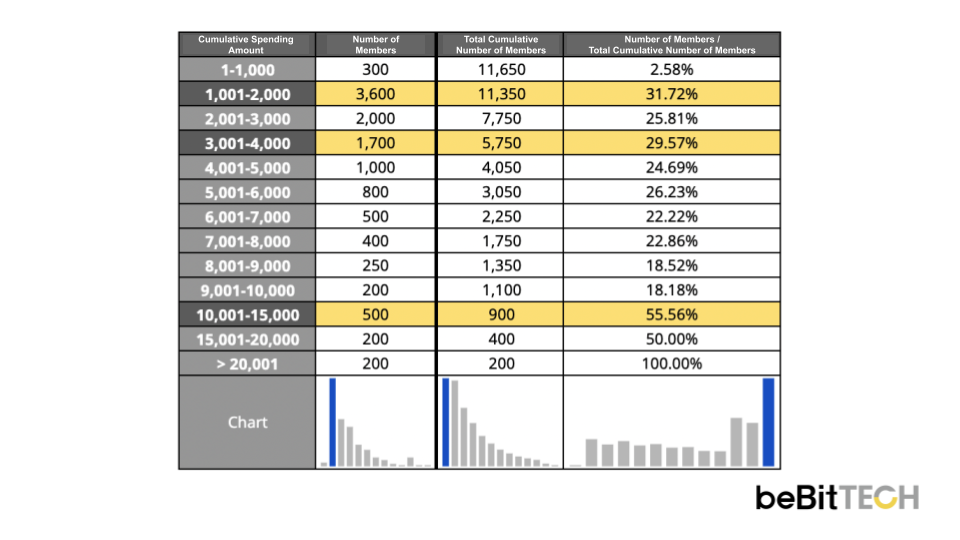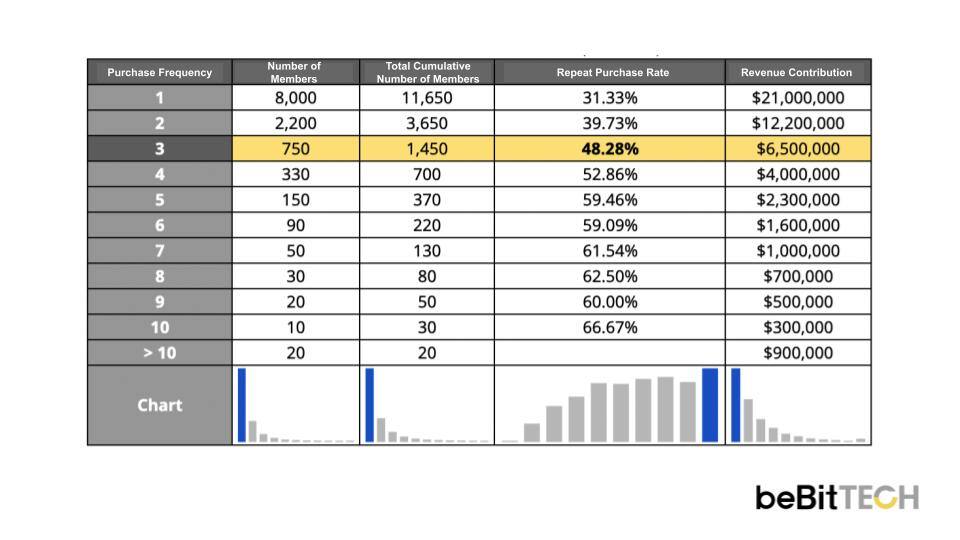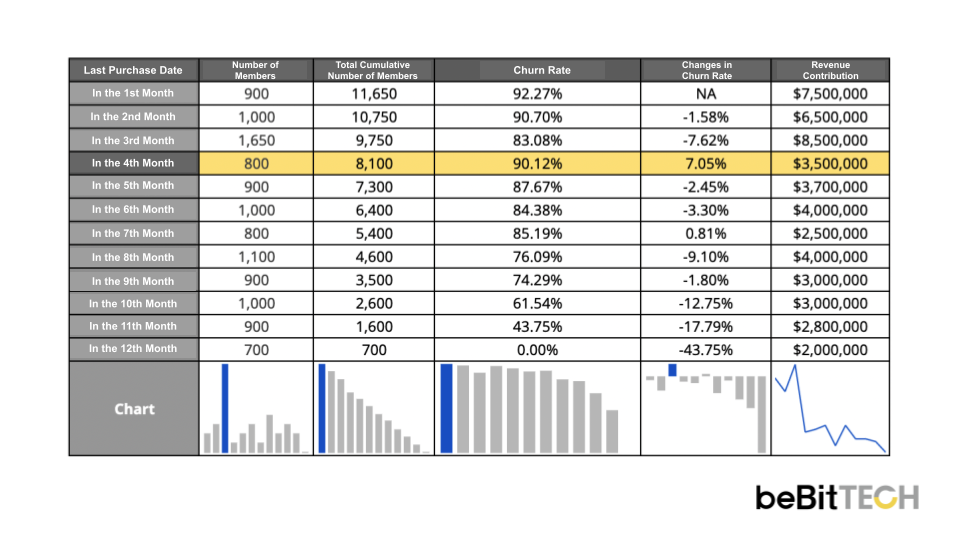A membership system is a crucial strategy for enhancing brand loyalty. By offering benefits and incentives, brands can encourage members to increase their purchase intentions and spending frequency. This does not only enhance customer retention but also creates a stable revenue stream for the brand.
Take the famous Starbucks as an example. Their 'Starbucks Rewards' program (where customers accumulate stars through purchases to earn different levels of rewards) effectively creates stable and substantial revenue for the brand. As of 2020, the number of Starbucks Rewards members in Taiwan exceeded 2.2 million, contributing to over 50% of the company's revenue. The highest tier, Gold members, who make up 20% of the membership, contribute over 40% of total revenue. This demonstrates the significant impact that loyal members can have on a brand's revenue. A well-managed membership program can lead to considerable revenue growth for the brand.
How do we build an effective membership system that can enhance loyalty and drive revenue? This article will cover the following key areas to build a membership system that significantly enhances member retention and creates more revenue.
How to Build a Membership System: Establishing Membership Tiers
Why is it important for a good membership system to have tiers? Membership tiers guide members on a journey of growth, encouraging them to become loyal customers. By offering additional benefits, rewards, upgrade gifts, and even opportunities to participate in new product development discussions, brands can motivate new members to make repeat purchases and stay engaged.
We can use data on member purchase intentions and spending frequency to set appropriate thresholds for each tier. By setting suitable spending thresholds and offering attractive upgrade incentives, general members can gradually progress to become VIP members. How can you design appropriate spending thresholds for each tier? Here are two approaches to consider:
Setting Membership Tier Thresholds Based on Average Order Value (AOV)
One common approach to setting membership tier thresholds is by using the average order value (AOV). For example, if a brand's AOV is approximately NT$1,500, setting the threshold for the first tier upgrade at NT$1,600 would require only a slight increase in spending for consumers to upgrade. This strategy can be complemented by offering additional products for purchase at a slightly higher price, encouraging members to spend more and thus increase the AOV.
For the second tier upgrade, combine the member's purchase frequency with the AOV. If the AOV is NT$1,500 and members typically achieve stable repeat purchases after three transactions, brands could set the second tier threshold at NT$4,500 (NT$1,500 * 3). Having two spending thresholds creates three membership levels. It is advisable to offer varying levels of discounts and rewards for different tiers during promotional events, thereby motivating members to upgrade their memberships in order to enjoy more benefits.
Introducing a third membership tier does not only require additional planning to provide VVIP members with exclusive bonuses and promotional offers, but also necessitates considering the budget for membership management. Ensure that there is enough margin to offer substantial benefits to VVIP members to keep them engaged and encouraged, ensuring continuous spending frequency even after their membership upgrade.
Determining Membership Tier Thresholds Using RFM-M (Monetary) Data

We can also use the spending data from the RFM (Recency, Frequency, Monetary) model to plan membership upgrade mechanisms. Here's how to explain it using the data above: First, extract the ‘cumulative spending amount' for different ranges, and map the corresponding number of members. Then, accumulate the number of members from highest to lowest 'cumulative spending amount' to calculate the 'total cumulative number of members'. By dividing the number of members in each range by the 'total cumulative number of members', you can determine the proportion of members that fall under the lowest spending range.
For example, if we analyze the number of customers who make repeat purchases within a specific spending range, we may find that there are 3,600 members whose cumulative spending falls within the NT$1,001-NT$2,000 range. This represents 31.72% of the 11,350 members who have spent more than NT$1,001. This indicates that a significant proportion of members are clustered in the NT$1,001-NT$2,000 range, suggesting that NT$2,000 is a threshold that many members struggle to surpass.
Therefore, the first spending threshold for upgrading membership could be set at 'cumulative spending greater than NT$2,000'. By offering incentives, brands can encourage members to move to the next spending level.
To set a second threshold, the same method can be applied. For example, 'cumulative spending greater than NT$4,000' or 'cumulative spending greater than NT$15,000' could serve as references for subsequent threshold upgrades.
How to Build a Membership System: Member Benefits
Once you have established the membership tier thresholds, the next step is to decide on the benefits for each tier to encourage continuous spending and upgrades. Common membership benefits include bonus points, order discounts, birthday gifts, upgrade gifts, and VIP-exclusive products. How can you use these diverse incentives to motivate members to upgrade?
After setting the upgrade thresholds, calculate the average contribution amount per member at each level. Combine this with internal cost data to determine the allowance for member benefits. For example, if a VVIP member generates NT$50,000 in annual revenue for the brand, with a net profit of NT$5,000 (10% profit margin), this NT$5,000 represents the available margin for benefits. Offering a 5% cashback on spending is reasonable, while offering more than 10% would result in a loss.
With a 10% profit margin and a 5% cash back for VVIP members, the remaining 5% can be allocated to other member benefits. These could include upgrade gifts, exclusive VVIP events, and birthday gifts.
Provide upgrade gifts that are closely related to your brand, such as seasonal new products or product sample packs, to create cross-selling opportunities. You can also offer complementary items related to your products, such as a protein brand giving a shaker bottle or sports gear to upgraded members. These gifts not only serve as rewards but also reinforce brand image and loyalty.
For top-tier VVIP members, offer more than just cash back. Organize exclusive product previews or discussion meetings, and annual appreciation events. Allow VVIP members to see or purchase new products first, or even participate in product development. Creating a sense of exclusivity and scarcity can enhance the loyalty of VVIP members. On their birthdays, send handwritten birthday cards to add a personal touch and warmth to the interaction. This helps to strengthen their emotional connection with the brand.
How to Build a Membership System: Additional Considerations
In addition to setting membership tier thresholds and establishing member benefits, we can also use other RFM data to engage customer and build brand loyalty. Here, we will explain using the Frequency and Recency dimensions of RFM analysis:
RFM-F (Frequency): Understanding the Number of Purchases to Streamline Repeat Customers
Let's use the following data as an example:

We found that members who make three or more purchases have a repeat purchase rate of 48.28% or higher, indicating a stable repeat purchase behavior (48.28% of these members will continue to make purchases). Therefore, when designing the membership system, we can offer three separate discount coupons to new members after they join, encouraging them to complete three purchases to achieve a stable repeat purchase pattern.
RFM-R (Recency): Understanding the Repeat Purchase Frequency to Prevent Membership Churn

Looking from the dimension of Recency, we discovered that the customer churn rate increases significantly by the fourth month after a purchase. This indicates that it is crucial to encourage members to make another purchase within four months to prevent them from gradually losing interest. During this stage, it is advisable to set up automated and personalized repeat purchase reminders. These reminders can prompt customers to revisit the website, check out new products, or consider repurchasing items they might need, thereby keeping members active, engaged, and making regular purchases.
Conclusion
In building a membership tier system, we have explored how to determine spending thresholds and member benefits to create an effective membership program. To learn how to interpret RFM data, you may refer to our previous article: How to Quickly Obtain Essential RFM Data Analysis and Understand Consumer Insights? OmniSegment CDP Helps Marketers Quickly Access and Interpret Data!
If you are interested in developing a membership system, or need professional assistance with system integrations and data strategies, please contact us and let us know how we can help you!






